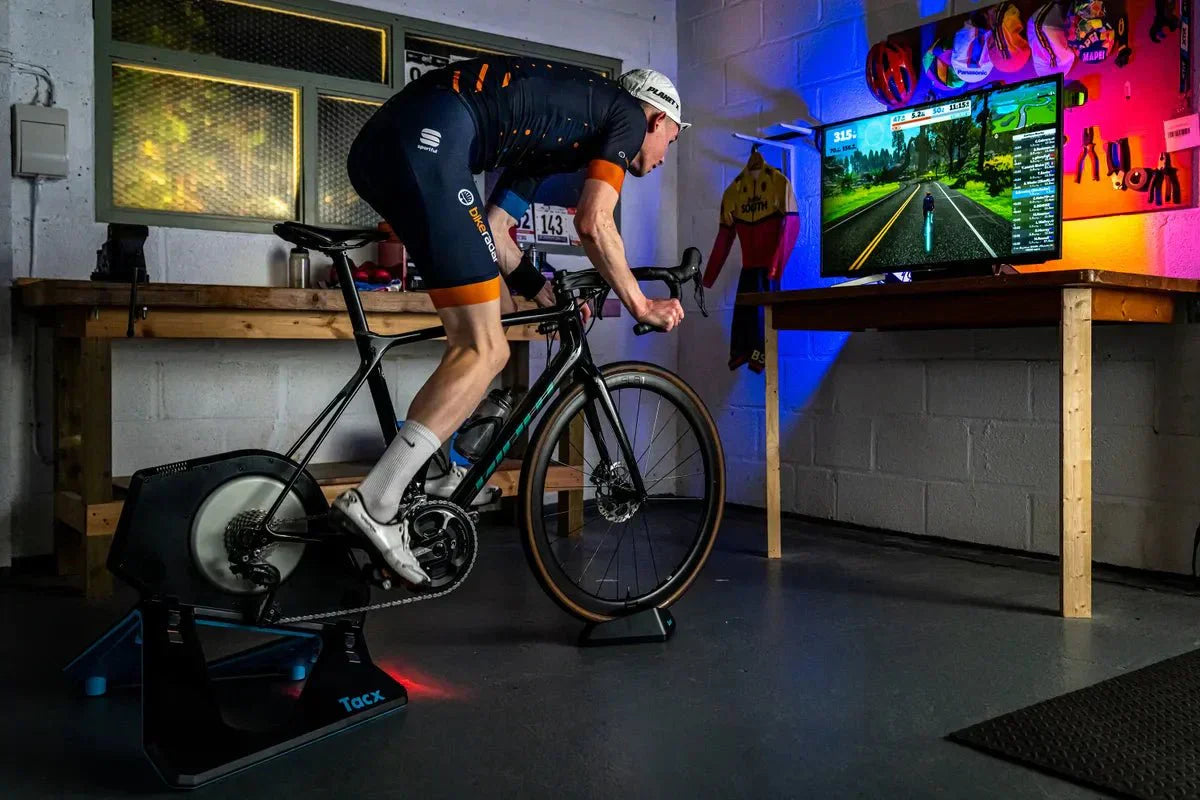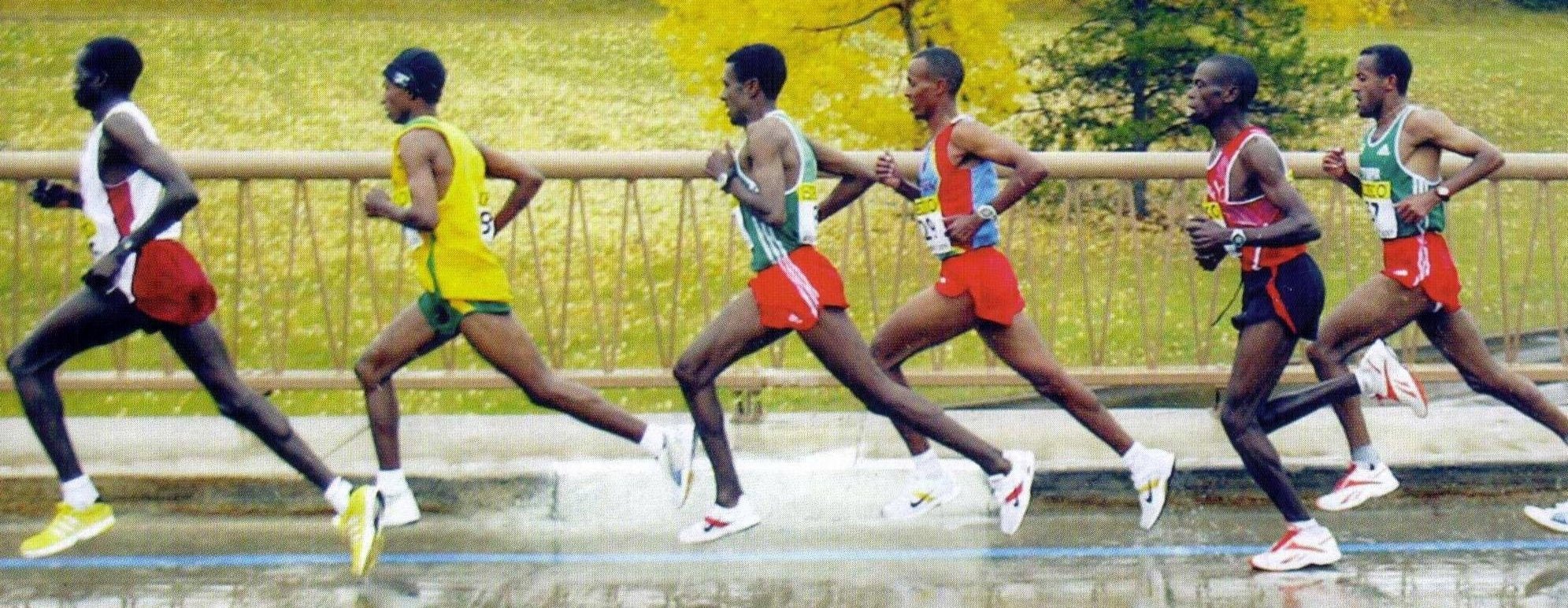
The Real Athlete’s Guide to Indoor Training with Zwift
The Real Athlete’s Guide to Indoor Training with Zwift
Indoor training used to be boring. Not anymore. Zwift lets you ride, run, or race in virtual worlds—making indoor sessions more fun, social, and effective. Whether you’re a cyclist, triathlete, or just want better winter fitness, here’s how to actually get results (not just log miles) with Zwift.
Why Zwift Works
-
Gamified training: Unlock achievements, level up, collect new kit—it keeps you coming back
-
Social accountability: Ride and run with friends or strangers, join group workouts or races, get motivated
-
Real data: See your power, heart rate, cadence, pace, and more—no more guessing
-
Flexible plans: Train for anything—5K, marathon, triathlon, century rides, or just general fitness
-
Train anytime: No weather excuses, no daylight needed—just log in and go
Getting Started: Zwift Setup in 3 Steps
1. Gear Up
-
Cyclists: Smart trainer (direct-drive like Wahoo Kickr or wheel-on like Saris M2), bike, device (PC, Mac, tablet, or phone), fan for airflow
-
Runners: Treadmill + Zwift RunPod (or a supported smart treadmill), device
-
Both: Heart rate monitor helps with accurate tracking
2. Install & Connect
-
Create a Zwift account (link), download the app, and pair your devices
-
Calibrate your trainer for accurate power (Zwift walks you through it)
3. Build Your Profile
-
Set your weight, age, and goals—Zwift uses this data for realistic in-game performance and to personalize workouts
Zwift Training Plans: How to Actually Get Faster
-
Pick a structured plan—from beginner to advanced, all built by pro coaches
-
Each plan includes endurance, intervals, recovery, and event prep
-
Mix it up: Try “group workouts” for accountability, or “free ride” for fun
Pro tip: Not every ride/run should be a race. Use easy days and recovery rides to get stronger—not just tired.
Custom Workouts and Variety
-
Use Zwift’s Workout Builder to tweak sessions to your needs—add intervals, adjust durations, or make it race-specific
-
Change routes/worlds: From Watopia to NYC, it keeps things fresh
-
Join events: Try races, Fondo rides, or group runs for motivation
Track What Matters
-
Power (watts): The best measure of cycling effort
-
Heart rate: Stay in the right zone—don’t overtrain
-
Cadence: Keep it steady for efficiency
-
Pace/distance: Useful for runners and triathletes
Sync with Strava, TrainingPeaks, or Garmin for all-in-one data tracking.
Make Indoor Training More Effective
-
Schedule Zwift sessions: Treat them like real-world workouts—put them on your calendar
-
Hydrate: You sweat more indoors—use a towel and drink every 15–20 minutes
-
Fuel: Eat before long sessions; bring gels or bars if you’ll go over 90 minutes
-
Use a fan: Keeps you cool and prevents overheating
Integrate Zwift with the Rest of Your Training
-
Sync with wearables: Track sleep, recovery, and stress for smarter training
-
Plan bricks (bike-to-run or run-to-bike): Zwift makes transitions easy
-
Log strength and mobility sessions offline for a full training picture
Zwift Safety and Injury Prevention
-
Always warm up and cool down
-
Get a pro bike fit for comfort and injury prevention
-
Don’t push through pain—Zwift’s not worth an injury
-
Keep your pain cave (training space) clutter-free and well ventilated
Real Athletes, Real Results
Alex, Software Engineer:
Went from Zwift newbie to national qualifier in 12 months—group rides + structured plan = +20% FTP.
Sarah, Busy Teacher:
Ran her first marathon with Zwift’s flexible run plans and social group runs. Stuck to her schedule and nailed a personal best.
Mike, Age-Group Triathlete:
Used Zwift’s multi-sport features to fit in quality workouts—no matter what the weather outside. Podiumed at his next local triathlon.
FAQ: Zwift for Endurance Athletes
Is Zwift worth it for runners, or just cyclists?
Zwift is legit for both. Structured run workouts, group runs, pace partners—it works for triathlon training, marathon prep, and more.
Do I need a smart trainer?
You’ll get the best experience with one, but classic trainers + speed/cadence sensors work too.
How do I not get bored indoors?
Change routes, try races, invite friends, mix up workouts, and use music or podcasts.
Does Zwift make you faster outdoors?
Yes—intervals, structured training, and group motivation transfer to real-world gains.
Can I use Zwift for brick workouts?
Absolutely. Bike first, then hop on the treadmill—no drive to the park needed.
Bottom Line
Zwift turns indoor training from “something I have to do” into “something I want to do.” You get stronger, more motivated, and ready for any race—rain or shine.
Want Zwift built into your custom training plan, or help setting up your pain cave for better results? [Book a consult] or grab my free Indoor Training Checklist. Got a Zwift question? Ask below—I’ll answer every one.


